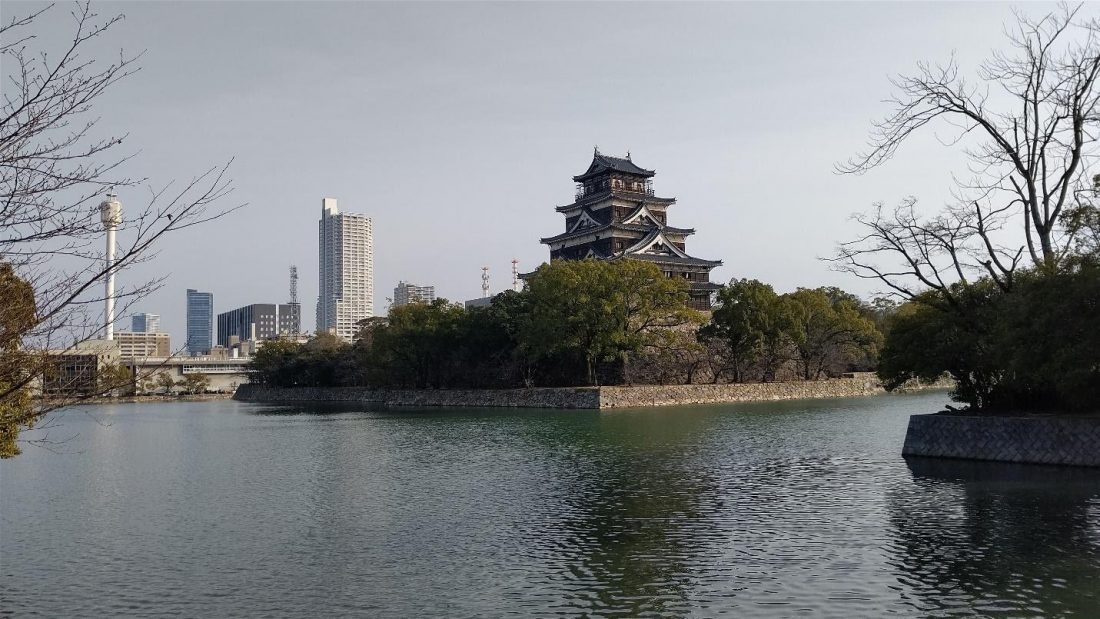100 Stories
Hiroshima Castle and The Gokoku Shrine: For History Buffs and People Who Love Beautiful Parks
Hiroshima, like many Japanese cities, was once a castle town. From the late 戦国時代 “sengoku jidai”, Warring States Period (late 16th century), to the beginning of the 明治時代 “meiji jidai”, Meiji Period (late 19th century), Hiroshima Castle was the headquarters for the region’s feudal lords.
Today, Hiroshima Castle serves as a museum, to protect and display local historical artifacts, and to educate people on Hiroshima history. What’s left of the Castle grounds has been turned into a public park. It is free to roam around and there are a few things to see and do, like see the 護国神社 “gokoku jinja”, Gokoku Shrine, a major shrine in Hiroshima city.
History of Hiroshima and Its Castle
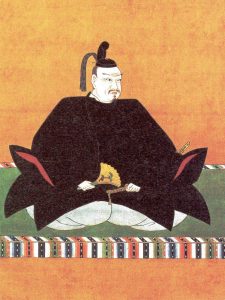
Mori Terumoto (image source, gettyimages)
Hiroshima Castle was founded by Mori Terumoto in 1589. Mori Terumoto, like his grandfather before him, Mori Motonari, was the feudal lord of what is now the Chugoku region. Modern Chugoku consists of Hiroshima, Shimane, and Yamaguchi Prefectures, and parts of Tottori and Okayama Prefectures.
Mori Terumoto choose Hiroshima Castle’s present location in the delta of the 大田川 “ota gawa”, Ota River because of its flat land, the natural defenses of its many rivers and its convenient proximity to the 瀬戸内海 “setonaikai”, Seto Inland Sea. At the time of the Castle’s establishment, there was no place called “Hiroshima” and very few people lived in the area. There is some controversy as to how it was eventually named Hiroshima. Some say it was inspired by a combination of two individual’s names, Oeno Hiromoto (a respected ancestor of the Mori family) for the “Hiro” part, and Fukushima Motonaga (the man who suggested the Ota River delta for the Castle’s location) for the “Shima” part. Others say that the name was inspired by the large island clearly visible from the Ota River delta, so the area was simply called “Hiroshima”, 広 “hiro”, wide/spacious, and 島 “shima”, island.
During Mori Terumoto’s time, Japan was a very turbulent place. The country was divided into many states that were at war with each other. It was not unusual for power to shift quickly and violently. Mori Terumoto was not in charge long before competitors came knocking on his door. In the year 1600, the Tokugawa Shogunate (a militaristic government that controlled most of Japan for centuries) came to over-throw Mori’s domain over the Chugoku Region. On the Shogunate’s behalf, Fukushima Masanori, from modern-day Aichi Prefecture, led the battle of Sekigahara which eventually forced Mori Terumoto to retreat to the town of Hagi in modern-day Yamaguchi Prefecture. The Tokugawa Shogunate then established Fukushima Masanori as lord of Hiroshima Castle and what is now Hiroshima Prefecture. Fukushima Masanori’s reign didn’t last long either, but for a different reason. There was a huge flood in 1619 that caused considerable damage to the Castle and its grounds. Without asking the Tokugawa Shogunate’s permission, Masanori went ahead with reconstruction plans. This was unacceptable from the Shogunate’s perspective because Masanori took money and materials that didn’t belong to him for the restoration. So, he was dismissed and sent to modern-day Nagano Prefecture. Asano Nagaakira took his place. Asano Nagaakira was a well-known warrior for the Tokugawa Shogunate and lord of modern-day Wakayama Prefecture before being transferred by the Tokugawa Shogunate to Hiroshima.
Asano Nagaakira was the start of a 12-generation long rule of Asano lords in Hiroshima Castle, from 1619-1869.
In the Meiji Period, the Japanese government started changing and the shogunate system fell apart. Castles started to serve as military headquarters for the now centralized, Imperial Government and not for individual lords. Hiroshima Castle was no exception to this. However, everything changed in 1945 when the atomic bomb was dropped over the city by Allied forces during World War II. The Castle was completely destroyed, reduced to rubble like the rest of the city. It was actually the War Office Communication Bunker, located on the Castle grounds, that first picked up the signal of a B-29 plane coming towards Hiroshima, which turned out to be the plane carrying the bomb. When the war was over, the Castle was eventually rebuilt but no longer as any kind of military facility, it was rebuilt into the museum you see today and the grounds were turned into a public park.
What to do around the Castle Grounds
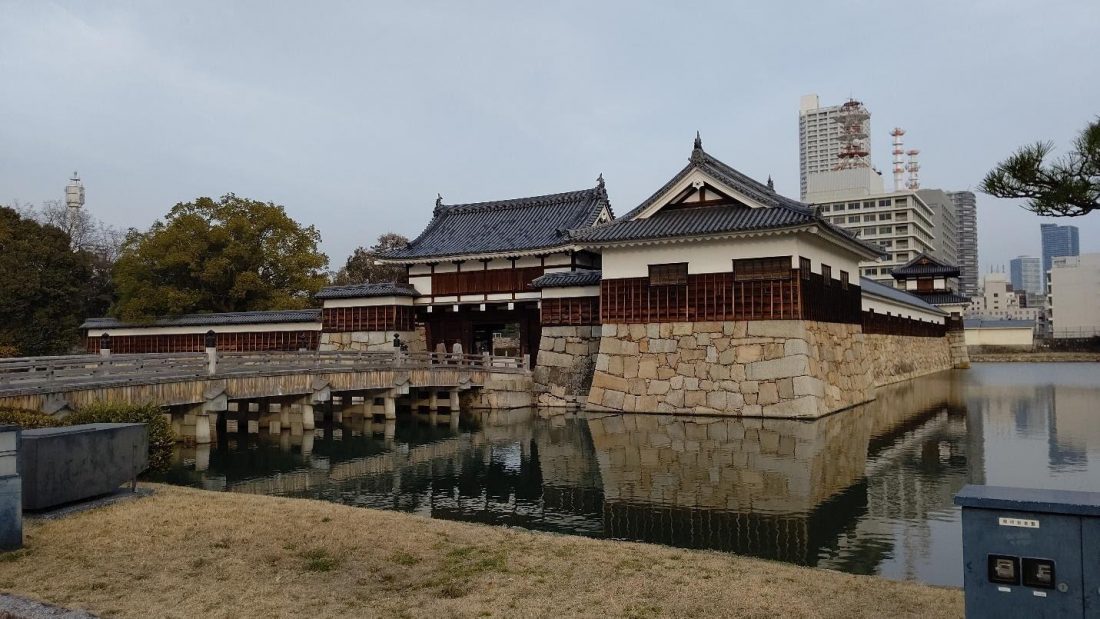
The Castle grounds are raised and surrounded by a moat, not unlike European castles, it was used as a defense from attack. These days, the moat is nothing but a spectacle, but it certainly does give the Castle a mighty appeal if you view it from the opposite bank. The Castle is up on the highest bit of ground, so it looms over the water and is framed by the sky, making it a very picturesque spot. There is a strip of green space with a trail that circles the opposite bank of the moat, so you can view the Castle and its grounds from all angles. There is also a really nice boat cruise you can take around the moat. They have English speaking guides that give little tours. On the far side of the grounds, away from the Castle, there is one, small bridge that leads you into the 二の丸 “ninomaru”, Secondary Compound. The Secondary Compound is surrounded by its own moat and there is another little bridge that crosses into the 本丸 “honmaru”, Main Compound (where the Castle is). These two compounds also functioned as a form of defense. If the castle was under attack, the soldiers and cavalry would gather in the Secondary Compound as the first line of defense if the enemy got past the moat.
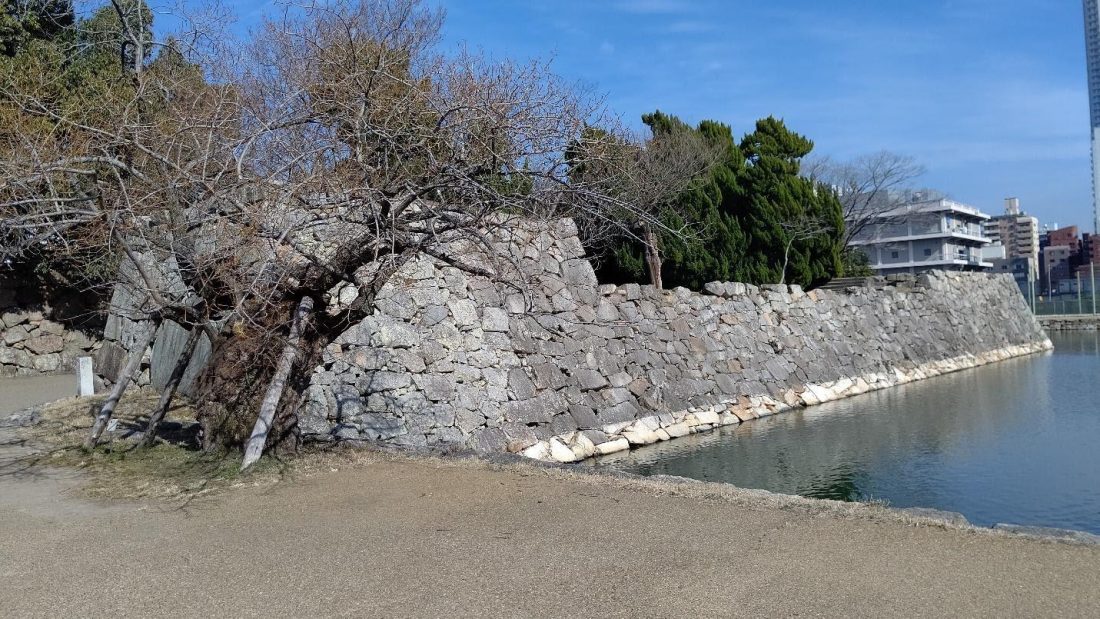
The Castle grounds, including both compounds, are pretty spacious, especially the Main Compound. There are many trees and grassy areas. Since it’s a public, free space, anyone can come and hang out for as long as they like. The trees are especially nice in the spring, because many of them are cherry trees and the blossoms are gorgeous. There are also a few trees that survived the atomic bomb on the grounds. You can usually spot them pretty easily because they look a little beat up, but they are still alive and healthy. Two straddle the bridge between the two compounds, an eucalyptus and a willow, and one in the center of the Main Compound, an ilex. The ruins of the original castle and two structures built in the late 19th century for the Imperial General Headquarters are all in the Main Compound. The ruins are mainly scattered stones that were once the structure’s walls and they have maintained somewhat of a square shape. Hiroshima City decided to preserve the ruins as historical landmarks.
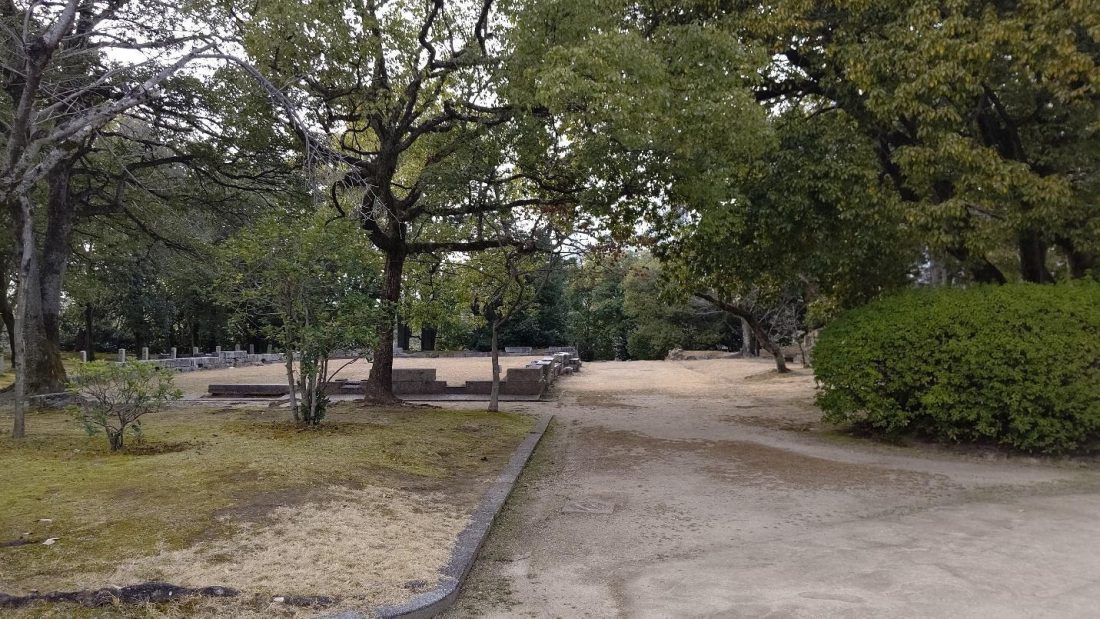
護国神社 “gokoku jinja” Gokoku Shrine
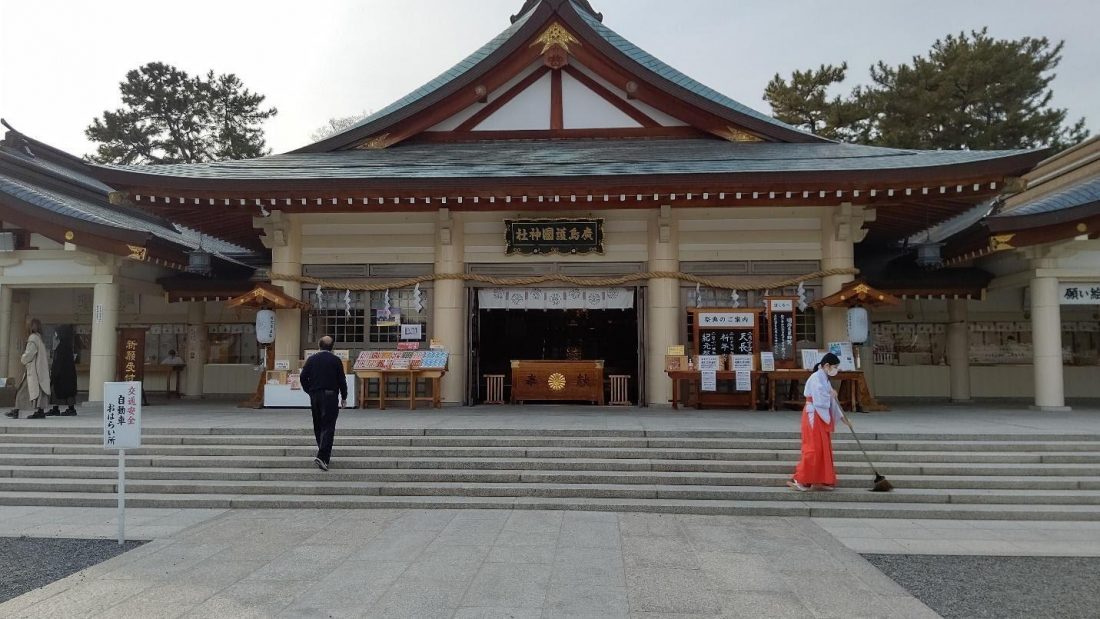
The Gokoku Shrine is Shinto (an ancient religion unique to Japan) and it is located in the Main Compound of Hiroshima Castle’s grounds. However, it has not always stood here. It was originally established in the late 19th century, during the Meiji Period. The Shrine was created to honor those who lost their lives in war, specifically the Boshin War, the war that ended the shogunate system and returned power to the Imperial government. Since then, it has been a place to honor and mourn those lost in any war. For a long time, this Shrine was located close to the old baseball stadium, right next to where The Peace Memorial Park is today. The atomic bomb in 1945 destroyed the Shrine along with everything else and it was rebuilt on Hiroshima Castle grounds in 1956.
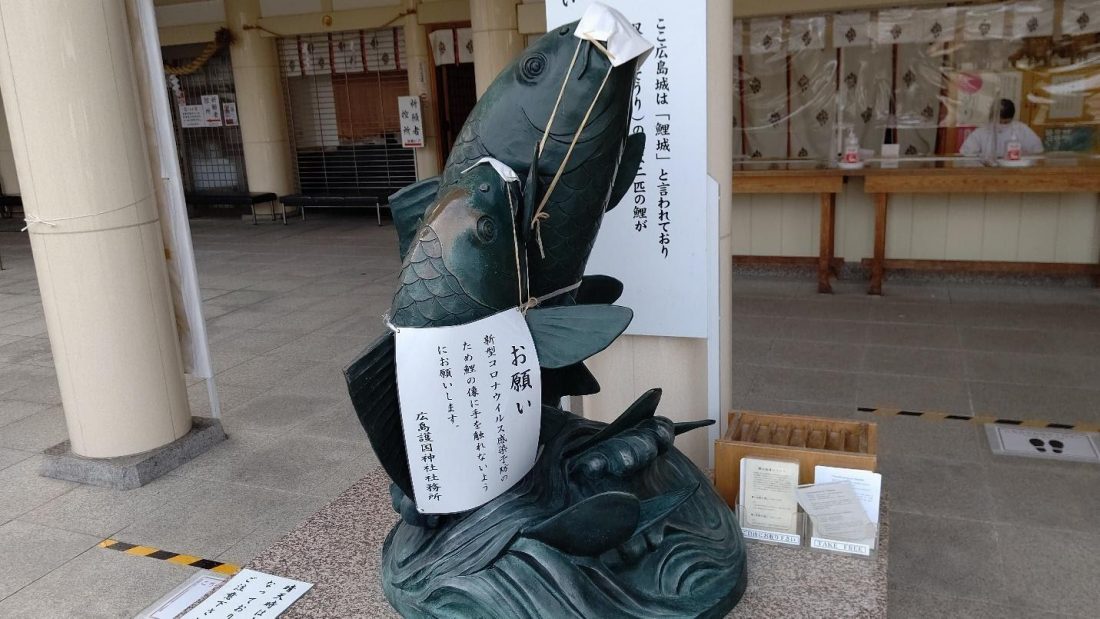
There are countless Shinto shrines in Hiroshima of all sizes but Gokoku Shrine is one of the largest and most popular. It is famous for receiving huge numbers of visitors for 初詣 “hatsumode”, first shrine visit of the new year. In Japan, it is a common tradition to go to shrines or Buddhist temples at some point in early January, if not on New Year’s Day itself, to pray for a good year. The Gokoku Shrine hosts many festivals all year round that attract a lot of visitors, and it is also well known for its “lucky carp”. Hiroshima Castle’s moat is filled with carp and Hiroshima’s baseball team is called, The Carp. The Carp players actually come to Gokoku Shrine at the beginning of every baseball season to pray for a good season. As a result, the Shrine sells little, carp trinkets and carp good luck charms. There are two carp stone statues standing on either end of the Shrine’s main structure. The statue on the right side of the Shrine is alone and it symbolizes moving forward independently. The statue on the left side of the Shrine has two carp and it symbolizes teamwork and overcoming obstacles together.
広島城 “hiroshima jyo” Hiroshima Castle
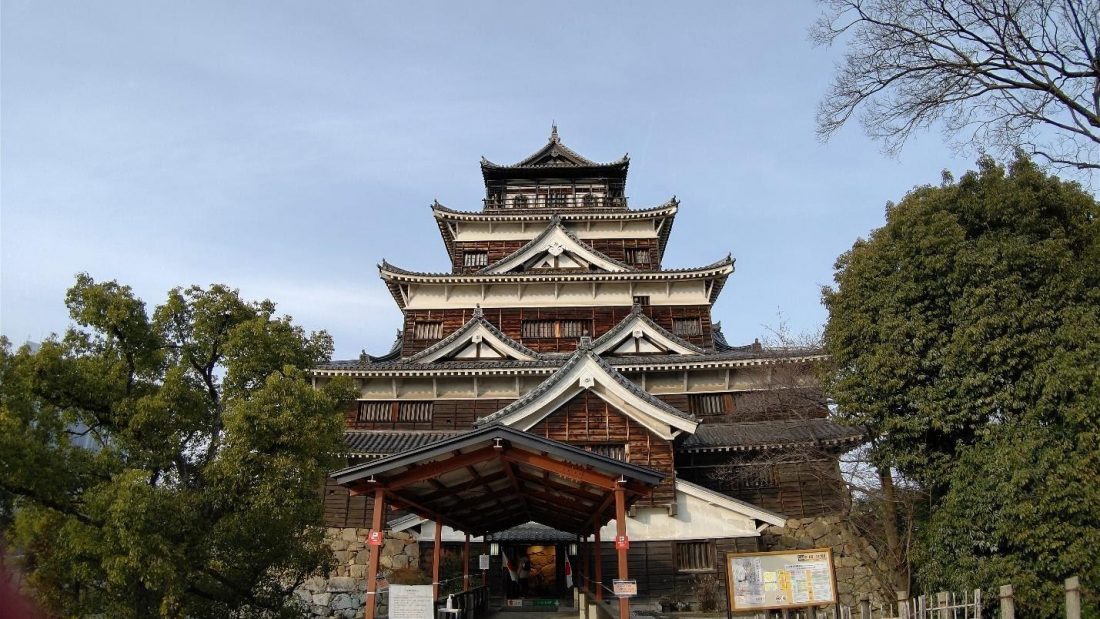
The current Castle is on the far north-west side of the Main Compound. It is really easy to find because you can see it from almost anywhere on the grounds. There are two sets of stairs that lead up to its entrance. It is five stories tall and stands about 26 meters high from its base.
Hiroshima Castle is fairly small for a “valley castle”, which is what Hiroshima Castle is, as opposed to a “mountain castle”. “Valley castles” and “mountain castles” are the two main styles of castles in Japan, their names imply exactly what they are. Valley castles are built in valleys and tend to be larger and grander than mountain castles. Mountain castles tend to be smaller because they were precariously built on the side of mountains. For a comparison of another valley castle, Osaka Castle is a famous version of this and it stands 50 meters high from its base and consists of 8 stories. It is much more spacious on the inside than Hiroshima Castle as well. Hiroshima Castle is also one of the “youngest” castles in Japan, meaning it was completely rebuilt top to bottom relatively recently. It has a lot of modern light fixtures and concrete is used liberally throughout the structure. Other castles are often very dark on the inside due to a desire to have less invasive wiring and they are made mostly of wood. It is not unusual for Japanese castles to have been rebuilt at one point or another, in fact, it’s unusual to see a castle that hasn’t been. War, natural disasters and fires have brought many castles down over the years. Out of over 5,000 castles built in Japan throughout its history, only 100 or so are still the original or partially the original. Most castles have been rebuilt after their destruction but they were rebuilt hundreds of years ago, not decades. The Hiroshima Castle that exists today was completely rebuilt with new materials in 1958, 13 years after it was destroyed by the atomic bomb.
The Castle has one entrance, a small lobby with a little window. This is where you pay the entrance fee. It is not expensive, only ¥370 for an adult and you can spend as much time as you like inside. After you get your entrance ticket, you go up a few stairs and then you are on the “first floor” of the Castle.
On the first floor, there is a lot about the initial establishment of the Castle and its early lords, plus, all of the political intrigue that was going on at the time. There are plenty of descriptions and detailed models to look at. On the second floor, there are several exhibits about what everyday life was like in and around the Castle during the first couple hundred years of its existence. There are several recreations of what homes looked like and explanations about what people ate, what people did for fun, and a little about the hierarchy of classes and culture. The third floor is full of the original weapons from the time. A lot of swords and armor are displayed as well as descriptions of who they belonged to and how they were made (if it is known). The fourth floor is designated for special exhibits, but it’s devoted to Hiroshima culture and further history tidbits and details. Finally, the fifth floor is the observation platform. It is partially outside and you can walk around a covered board-walk and look at the view, which is beautiful.
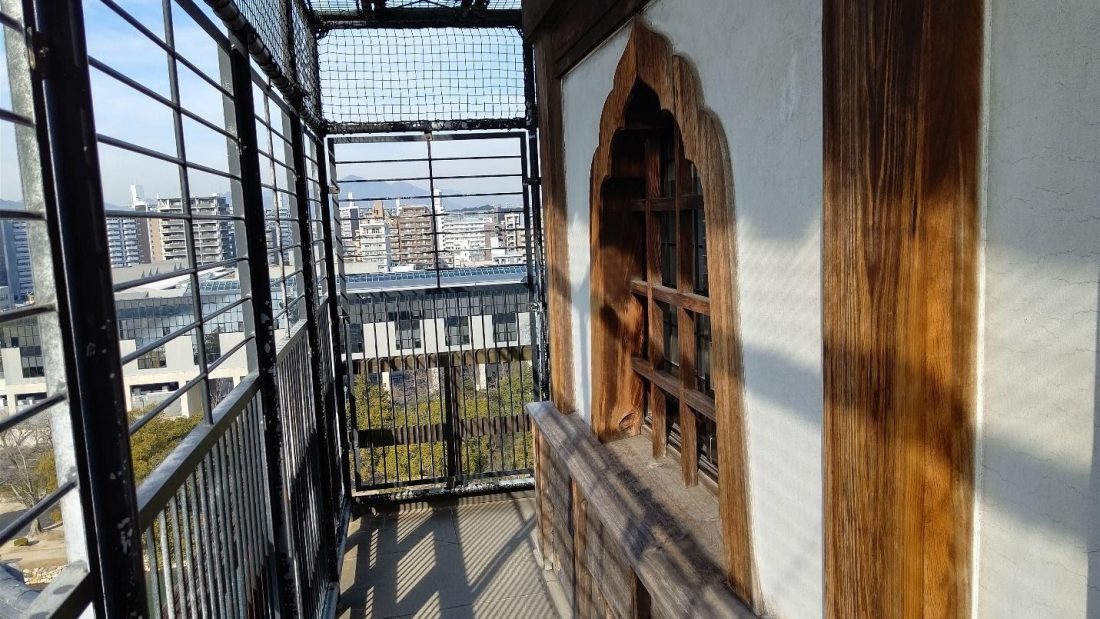
Most of the descriptions inside the Castle have English translations, so you won’t feel left out of much information, but if you are a real history buff and like samurai history in particular, I recommend the audio option. The Castle has audio descriptions in English that go into a lot of interesting details. Make sure to bring your own headphones with you if you want this option! The Castle doesn’t supply them! The audio option is meant for people with smartphones or tablets, you download the audio file from a provided QR code (which are everywhere inside the Castle) and listen as you walk through all the exhibits.
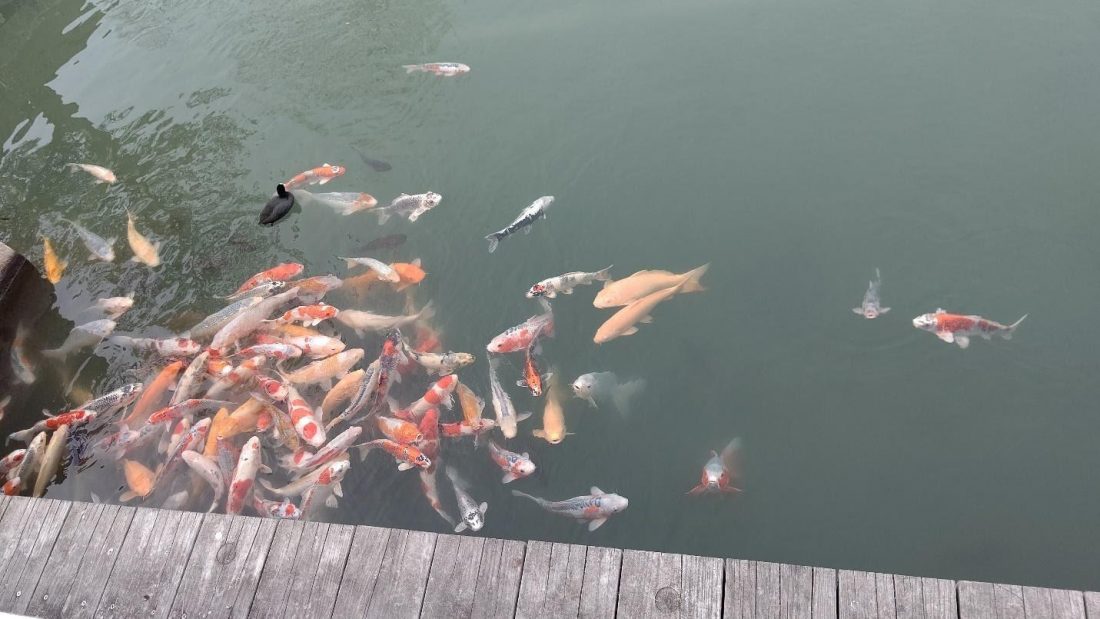
Access
Hiroshima Castle is located about 20 minutes, on foot, south of 新白島駅 “shinhakushima eki”, Shinhakushima Station, and about 20 minutes, on foot, north of The Peace Memorial Park. It is right in the middle of Hiroshima City so there are countless restaurants and other things to do within easy walking distance of the Castle.
Hiroshima Castle’s Website:
The English translation for the history section is difficult to read but the information about events and access is easy to understand and helpful.
http://www.rijo-castle.jp/index.html

